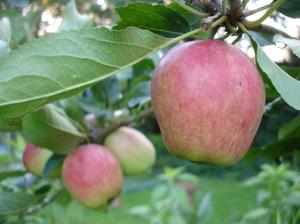
This morning there is a faint smell of vinegar in our house, yesterday I made Red Tomato Chutney using the crops that I had grown, Tomatoes (Large fleshy beef variety that contain very little juice or seeds), Onions and Bramley Apples, I made a large batch which produced 13 jars of this wonderful chestnut brown preserve, it cannot be eaten straight away as most chutneys take time to mature and should be left for at least a month before opening, I like to leave mine a little longer and will be eating this at Christmas with the Turkey. There are so many variations of Chutneys I think it is a case of anything goes whether its fruit, vegetables or a combination of both, it’s a great way to use up the last of your crops or alternatively to make good use of a glut. The word ‘Chutney’ is derived from the Hindu word ‘chatni’ which means strongly spiced if you like lightly spiced chutney then this recipe is perfect for you.
Red Tomato Chutney
Ingredients
- 900g/2lb Tomatoes (firm but ripe)
- 450g/1lb Onions
- 450g/1lb Cooking Apples (weight when peeled and cored)
- 450ml/¾ pint Malt or Wine Vinegar (I used Malt)
- ½ – 1 teaspoon Ground Ginger
- ½ – 1 teaspoon Ground Mixed Spice
- 350g/12oz Sugar
- 300g/10oz Sultanas
- Salt and freshly ground Black Pepper to taste
What you need to do
- Skin and chop the tomatoes, peel and finely chop the onions and the apples.
- Put all the ingredients into the preserving pan except for the sugar, sultanas and the seasoning, simmer gently until tender.
- Add the sugar and stir over a low heat until dissolved then put in the sultanas and seasoning.
- Simmer steadily, stirring regularly until it is the consistency of a thick jam.
- Spoon into hot sterilized jars, add a waxed circle and tighten the lid securely.
- Store in a dark, cool and dry place.
Notes:
- I made 2.5 times the above quantities in a large stainless steel pan 17cm high x 25cm diameter, this is the maximum volume that can be made in this size of pan.
- Once the sultanas have been added you need to stir the mixture regularly as they sink to the bottom and can burn.
- If the chutney is slow to reduce down to a jam consistency, spoon off some of the watery mixture from the top of the pan and sieve out the vinegar liquid returning any pulp to the pan.
Homemade chutneys, jams and preserves make a lovely personal gift, why not plan ahead and give friends/family a home produce hamper this Christmas.
Gill
















